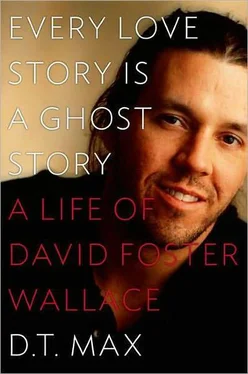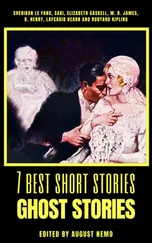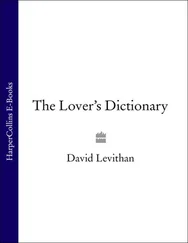Howard felt he had a prodigy of a novel on his hands, a book that was brilliant, intuitive, obeying no rules. He settled down to edit the long manuscript, accompanied by a reference book on Wittgenstein. Early in the New Year he sent Wallace a note with four pages of suggestions, focusing on passages he found self-indulgent and on problems of chronology. He thought his edit quite light, given the length of the manuscript.
Wallace was just now settling in for the spring semester. Howard’s letter knocked him off stride. Fragile in his confidence, even mild criticism hurt him, and since negative comments could plunge him into effulgences of self-doubt, he responded immediately, hitting the ball right back over the net. “If this seems fast,” he assured his editor, “be aware that I have done nothing ELSE besides eat and smoke since I got your letter and suggestions,” adding sneakily, “Don’t think because I’ve sent this back to you so quickly I’m not ready and willing to go over it again if you decide it’s necessary…I’ll just pull another all-weeker.”
Wallace had promised Howard he would find him reasonable when it came to editing, “neurotic and obsessive” but “not too intransigent or defensive about my stuff.” Generally, he was true to his word. If Howard adduced publishing wisdom or reader response, Wallace stepped quickly out of the way. Wallace had made a pun on the names of Raymond Carver and Max Apple, a comic novelist. “This Carver/Apple joke is too cute and you’ll be picked on for it. Drop it,” Howard wrote; Wallace did. Howard thought Wallace overdid the use of ellipses in quotes in dialogue as a way of indicating a lack of verbal response, dead air. Wallace trimmed them back. Howard found Dr. Jay, the bizarre psychiatrist whom both Rick Vigorous and Lenore see, tedious. “The more you condense or even eliminate his palaver, the better for the book,” he insisted. Specifically, he found Dr. Jay’s “membrane theory” of personal relations “disgusting and far too strange for the book’s good — and it is very tenuously related (I think) to whatever Lenore’s plans for Lenore B might be.”
This was pushing too hard. Accusations that he was careless or meandered set Wallace on edge. It mattered enormously to him that the power of his mind be acknowledged. The membrane theory was one of his favorite moments of the book. It was the unbalanced Dr. Jay’s assertion that human relations could be entirely understood with regard to the struggle over the boundary between the self and the other. Physical limits were mental limits too: “Hygiene anxiety,” the therapist points out, “is identity anxiety.” The membrane around us kept us safe and clean but also carried the risk of isolating us. It sounded Freudian, came out of Wallace’s reading of literary theory, and struck a chord with the hygiene-obsessed Wallace. It played off of Vigorous’s sexual problems with Lenore as well — her own boundaries frustrate his small penis. In response to Howard’s letter, Wallace gave his editor a bit of the razzle-dazzle methodology he was riddling his Arizona writing teachers with. The membrane theory, he wrote,
while potentially disgusting…is deeply important to what I perceive as a big subplot of the book, which is essentially a dialogue between Hegel and Wittgenstein on one hand and Heidegger and a contemporary French thinker-duo named Paul DeMan and Jacques Derrida on the other, said debate having its root in an essential self-other distinction that is perceived by both camps as less ontological/metaphysical than essentially (for Hegel and Witt) historical and cultural or (for Heidegger and DeMan and Derrida) linguistic, literary, aesthetic, and fundamentally super or metacultural.
This long sentence was Howard’s first glimpse of how thoroughly his young author had worked out the philosophical thinking behind the book — or perhaps of the rigid will behind a hyperverbal façade — and he backed off. Howard’s more concrete problem was with the ending: the book didn’t have one. In the last pages, Lenore appears to be closing in on her great-grandmother, but we never find out for sure. Nadell had raised the issue even before she sold the book to Viking Penguin. The story, she felt, just seemed to stop. She suggested Wallace think about a more traditional last scene. Wallace had dug in— The Crying of Lot 49 famously ends in mid-scene.
Howard too thought the text called for some sort of resolution. He urged his author to keep in mind “the physics of reading.” The physics of reading were, as Wallace came to understand the phrase, “a whole set of readers’ values and tolerances and capacities and patience-levels to take into account when the gritty business of writing stuff for others to read is undertaken.” In other words, a reader who got through a long novel like Broom deserved to know what had happened. “You cheat yourself as well of the opportunity to write a brilliantly theatrical close to the book,” the editor chided his young author.
Phrases like “the physics of reading” were seductive to the theoretician in Wallace. His clumsiness in the world of emotions also led to odd mixtures of gratitude and indifference. Over the years many editors would wonder whether Wallace was making fun of them with his excessive-seeming deference. The answer is he both was and wasn’t. To Wallace’s mind now, Howard had hazarded everything on his youthful work and no amount of gratitude could repay the gesture. At the same time he was not without diffuse cunning. He already had in mind to publish a follow-up volume of short stories; it would not be prudent to alienate his editor — or his readers, before he even had any. 16So, sincerely or not — or sort of — he wrote Howard that the idea of the physics of reading had “made an enormous, haunting impression on me.” He assured him that he didn’t want his novel to be like “Kafka’s ‘Investigations of a Dog’…Ayn Rand or late Günter Grass, or Pynchon at his rare worst.” To him these were writings that gave pleasure only to their authors. All the same, he simply could not rewrite the ending. To do so would risk turning the book into a realist novel and betray his deepest belief about the relationship between reader and character (and by extension between life and reader):
I admit to a potentially irritating penchant for anti-climax, one that may come out of Pynchon, but a dictum of his that I buy all the way is that, if a book in which the reader is supposed to be put, in some sort of metaphysical-literary way, in something like the predicament of the character, ends without a satisfactory resolution for the character, then it’s not only unfair but deeply inappropriate to expect the book itself to give the reader the sort of satisfaction-at-end the character is denied — the clear example is Lot 49.
He’d tried, he said, to write a proper conclusion, in which, he told Howard, “geriatrics emerge, revelations revelationize, things are cleared up.” But the scene, never sent (if it ever existed), felt too pat to him. The issue was a serious one for him. “I am young and confused and obsessed with certain problems that I think right now distill the experience of being human in a human community,” he begged Howard. “Can you help me with this?” What he meant was he knew reality to be fragmented, oblique, unbalanced, and his book had to capture that fragmentation if that experience was to count for anything — that was why he wrote the way he did. In the end, he insisted on keeping the ending he had written, breaking the novel off in midsentence, with Rick Vigorous, Lenore’s ex-boyfriend, attempting to pierce the physical boundaries of Mindy Metalman, assuring her, “I’m a man of my”—the missing word being, elegantly and self-referentially, the word “word.” 17
Читать дальше












